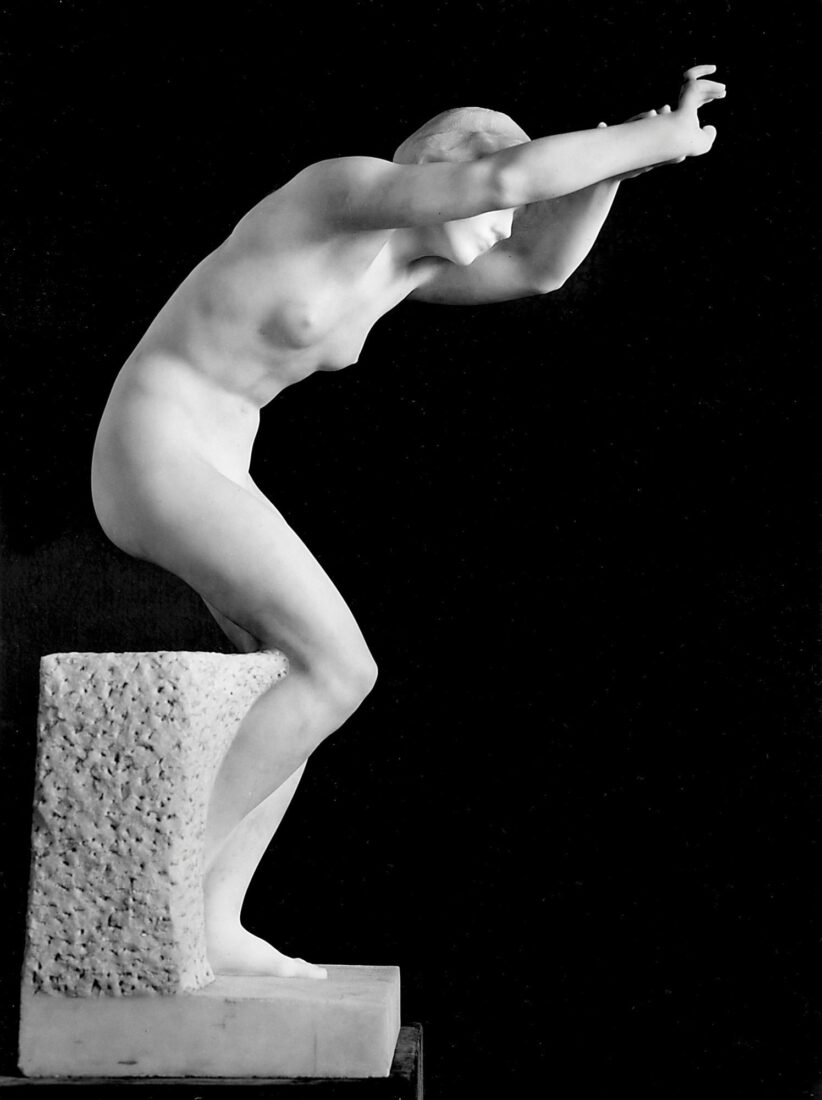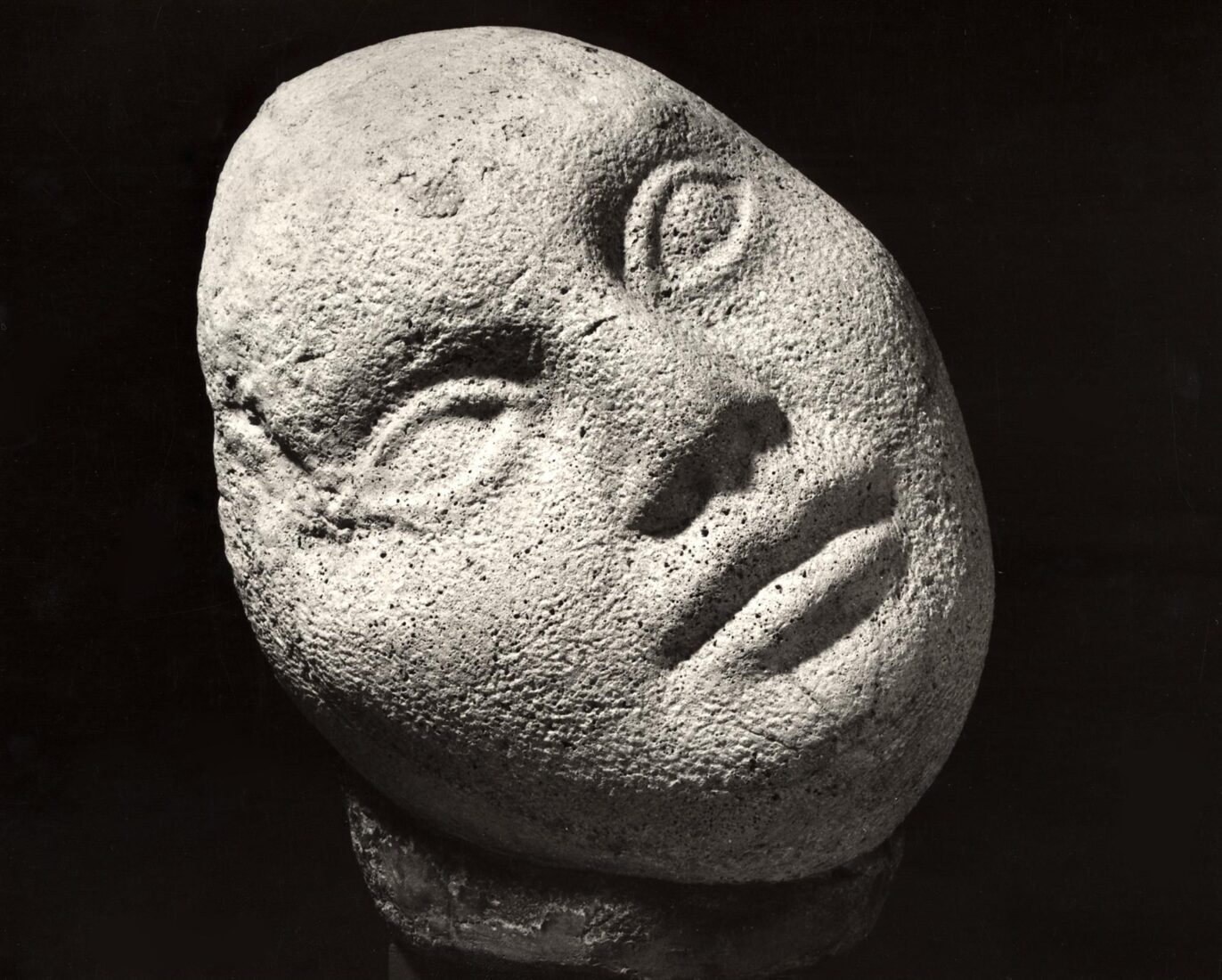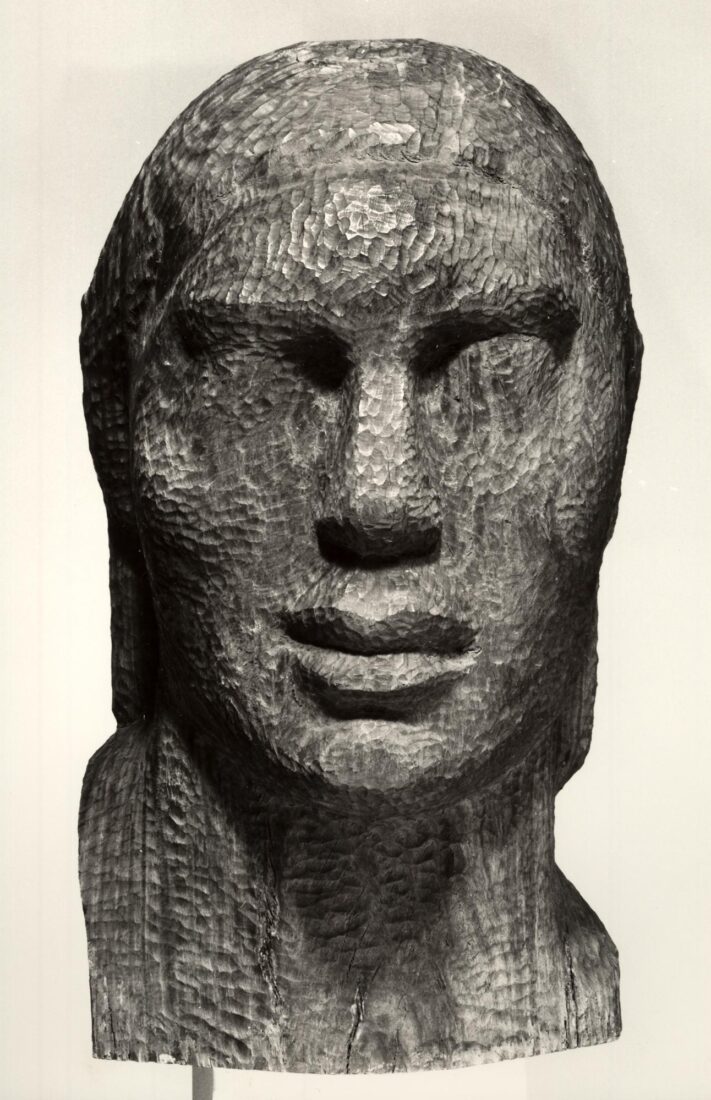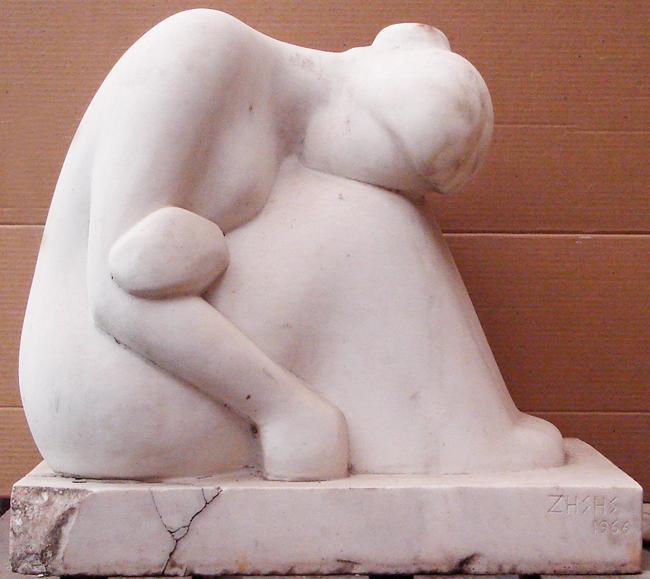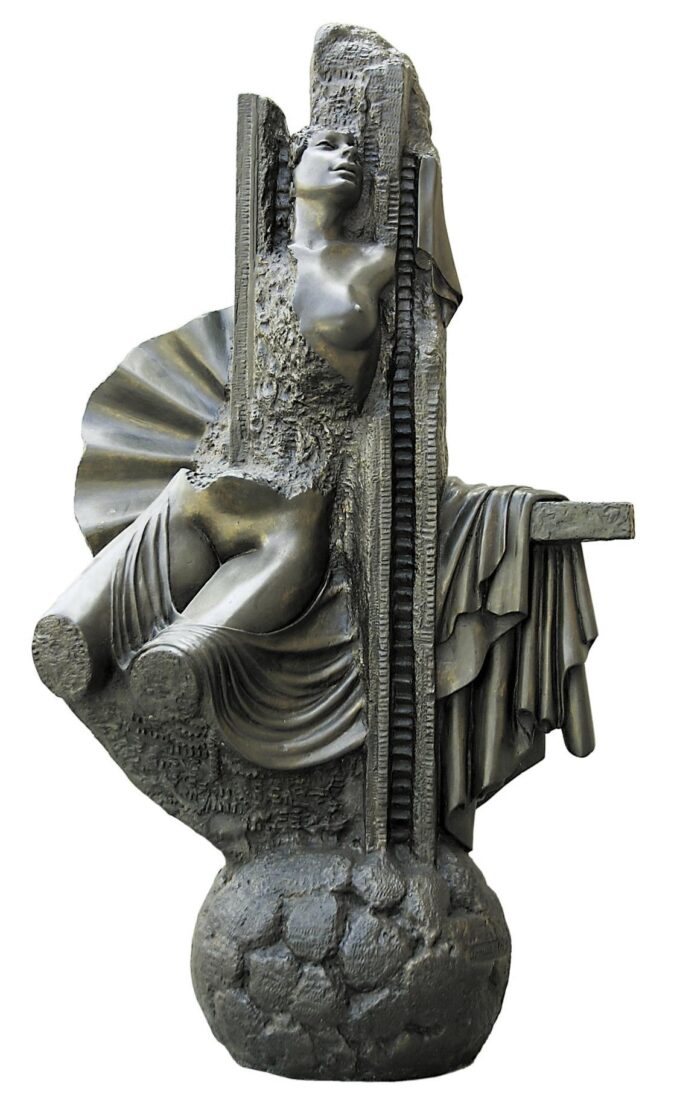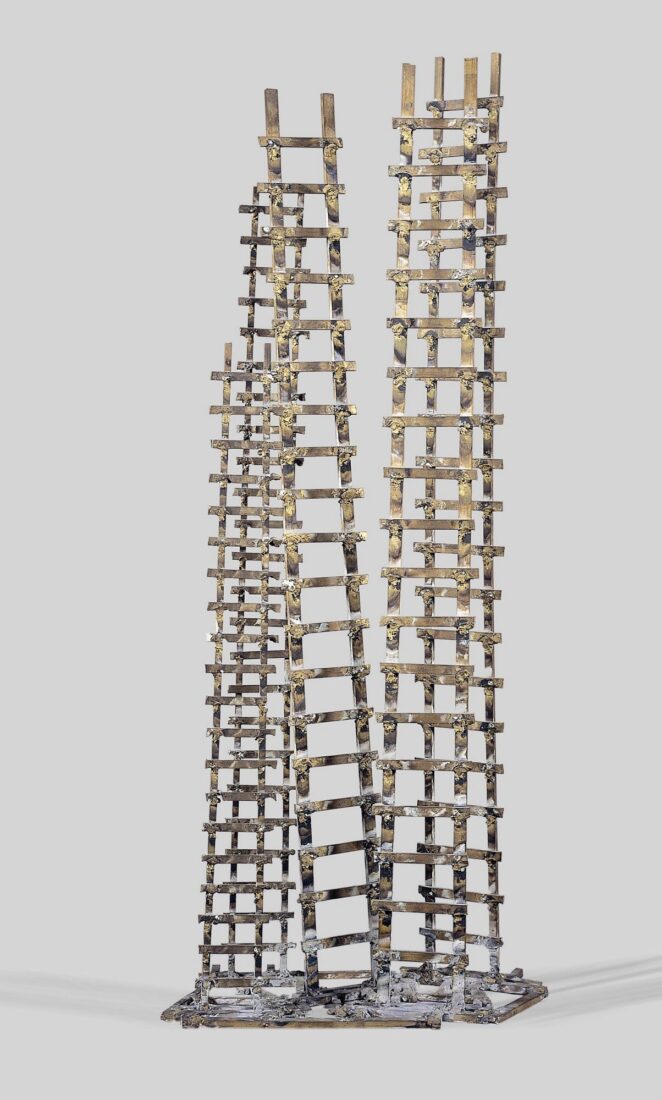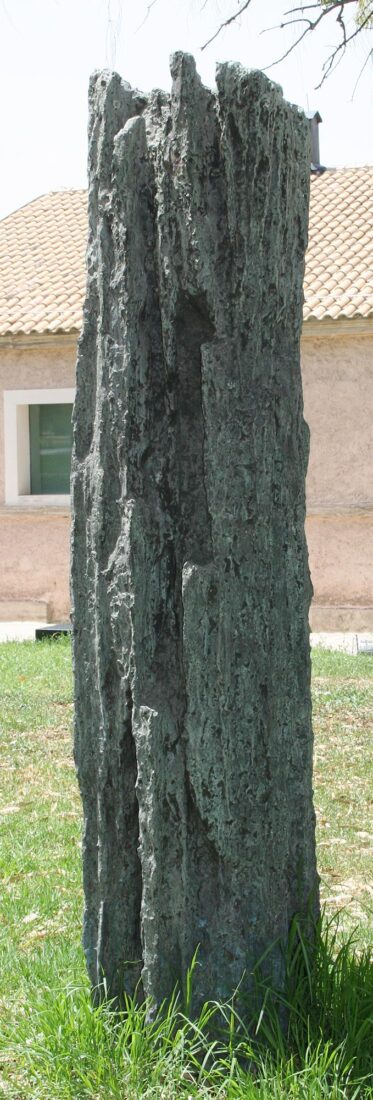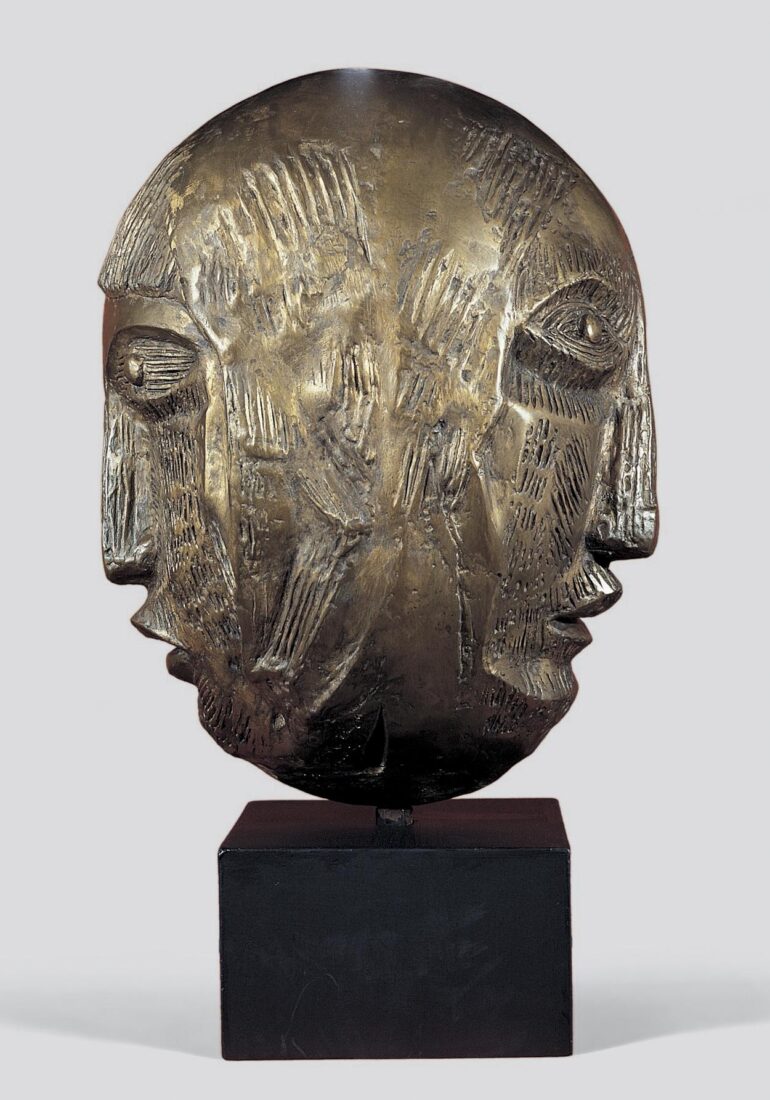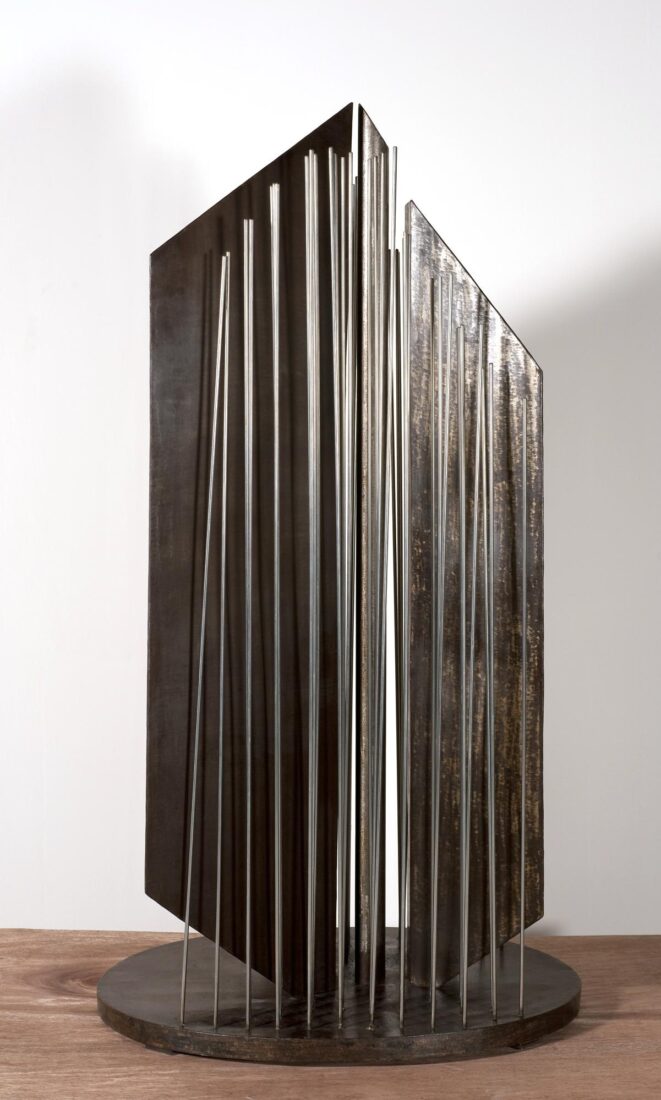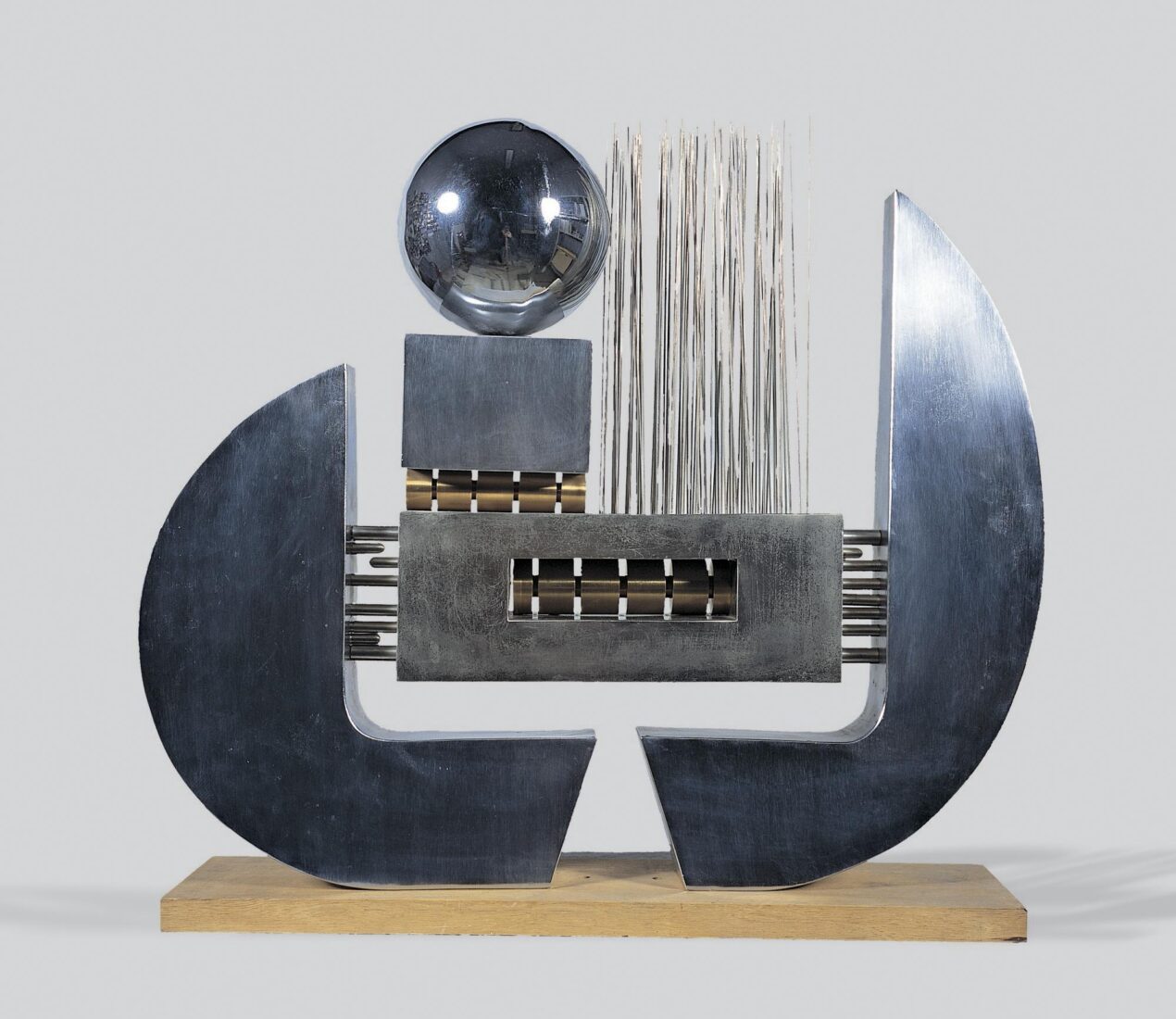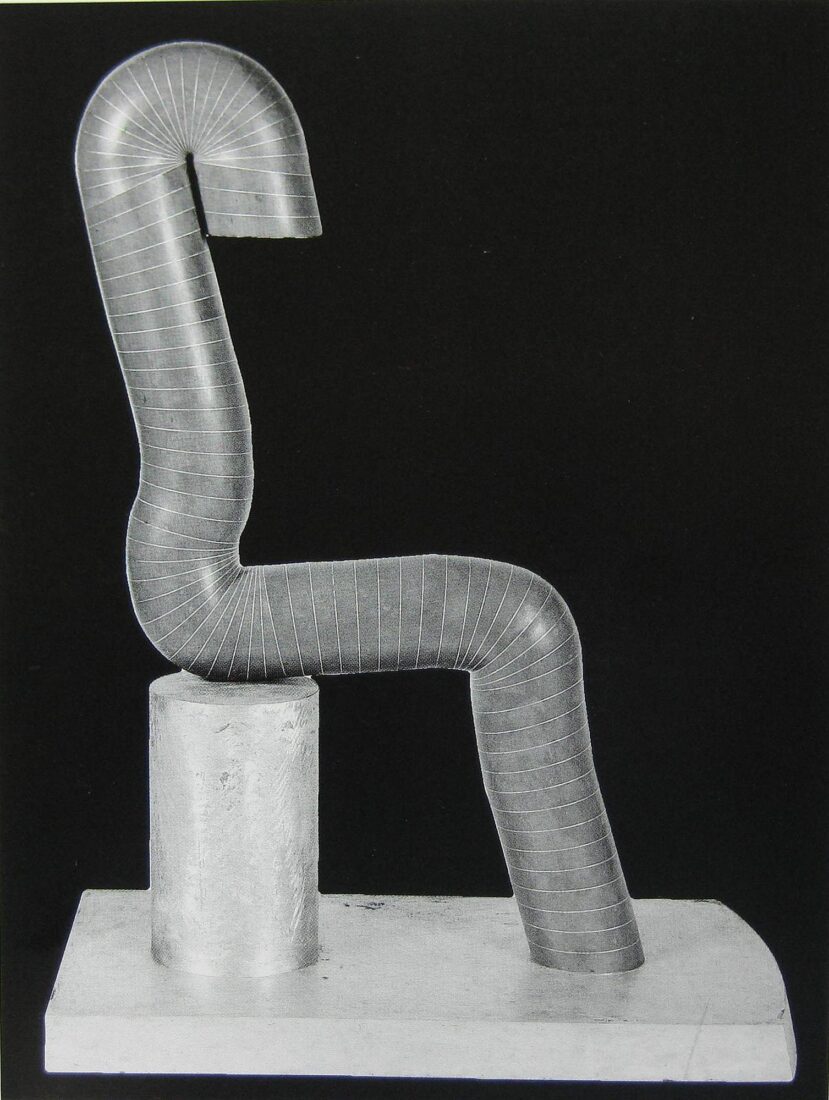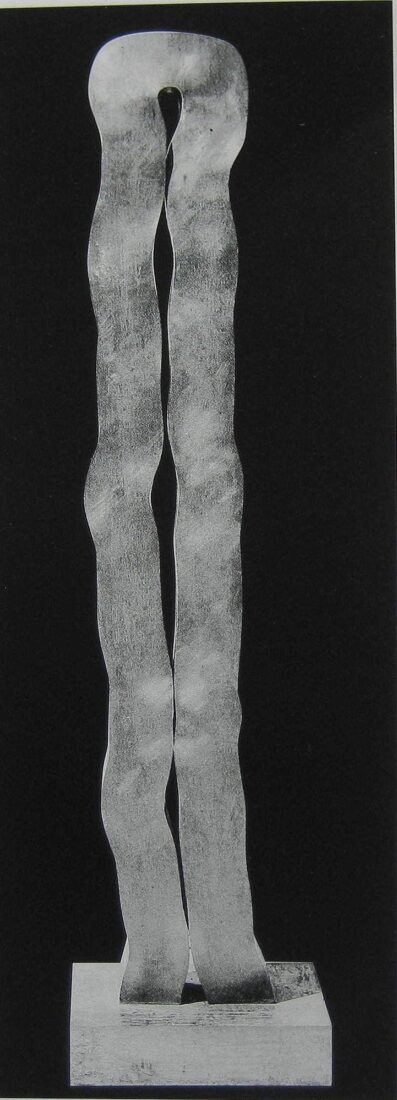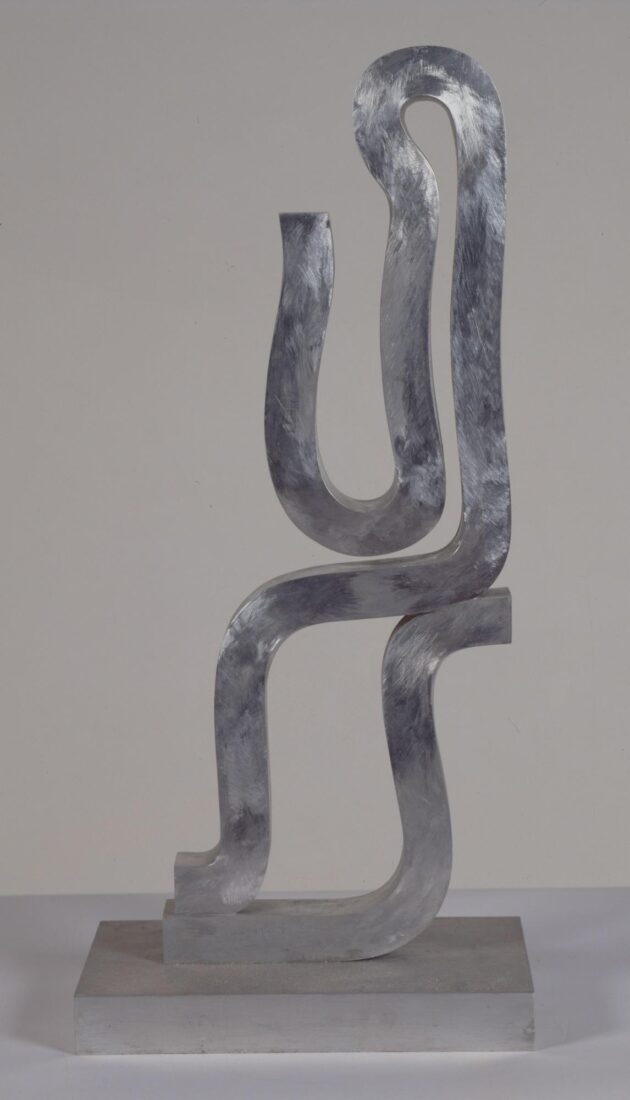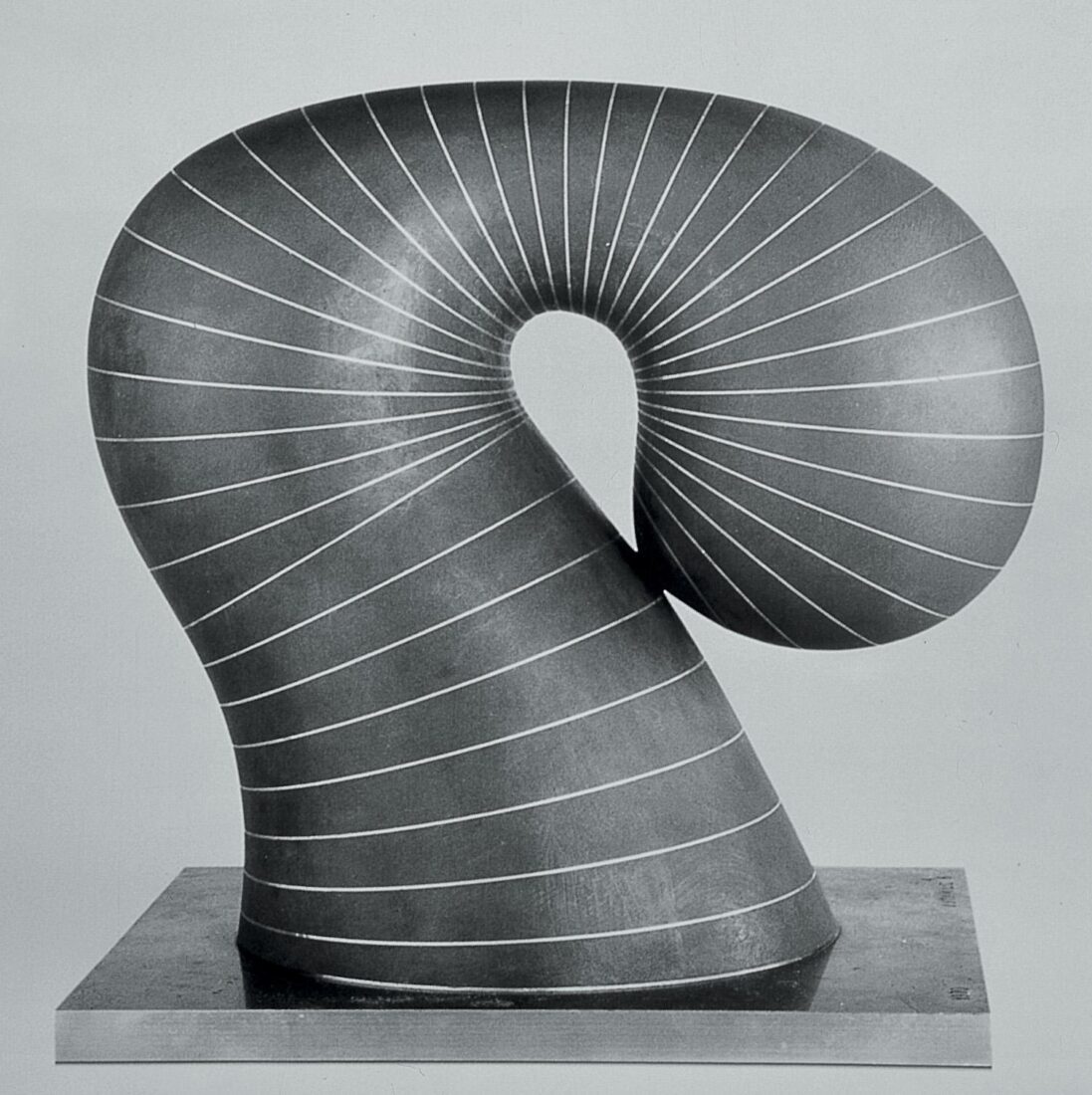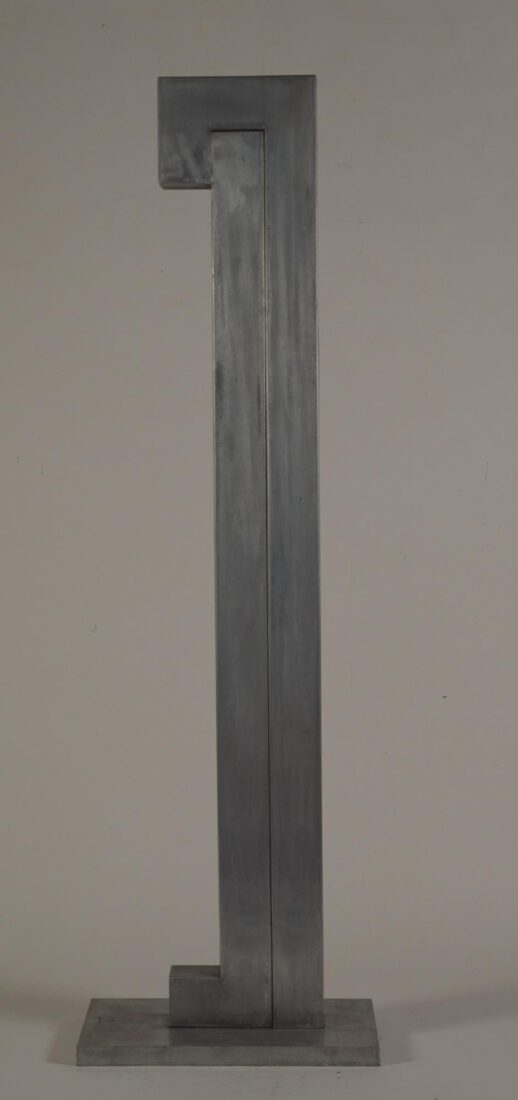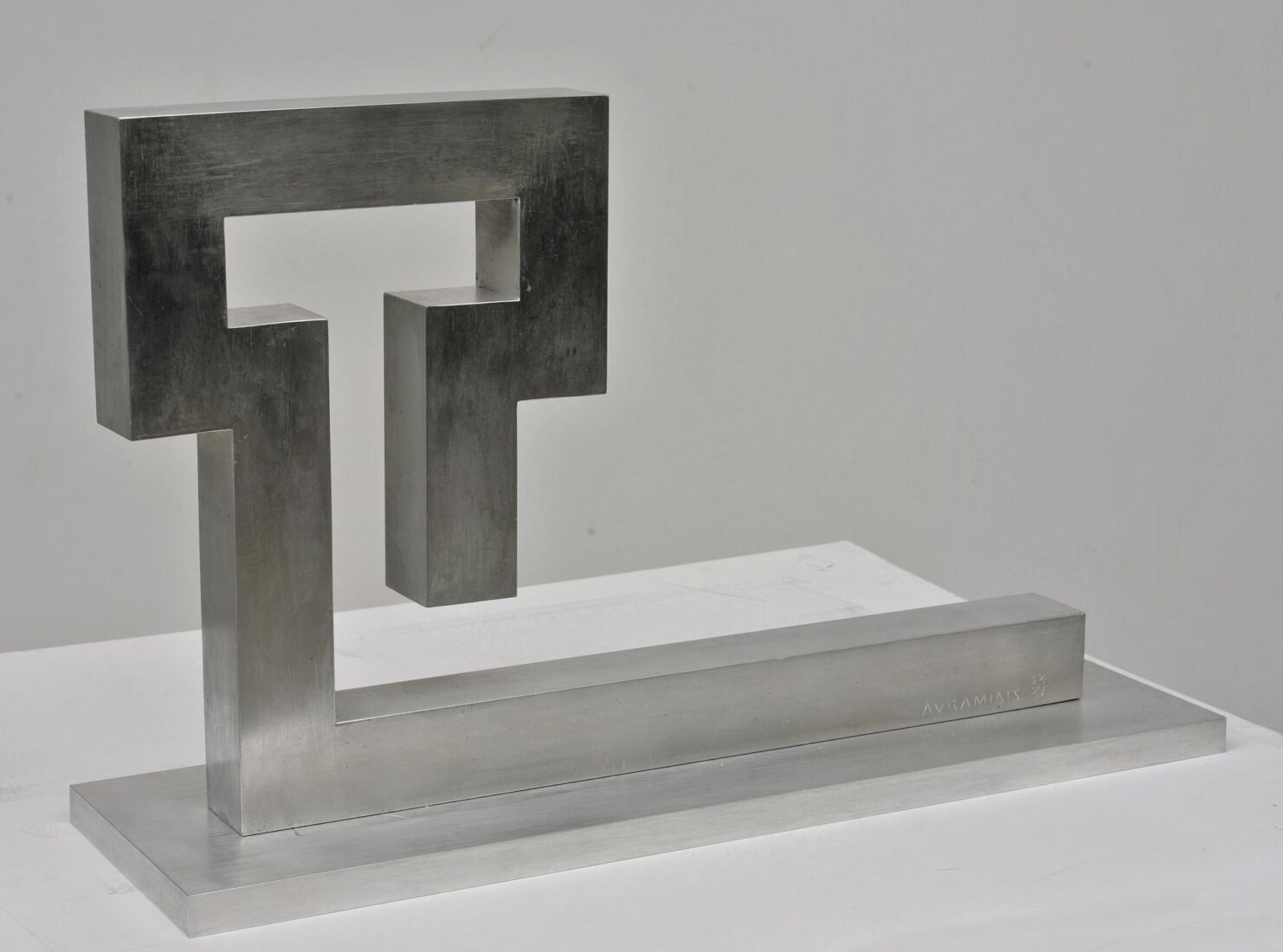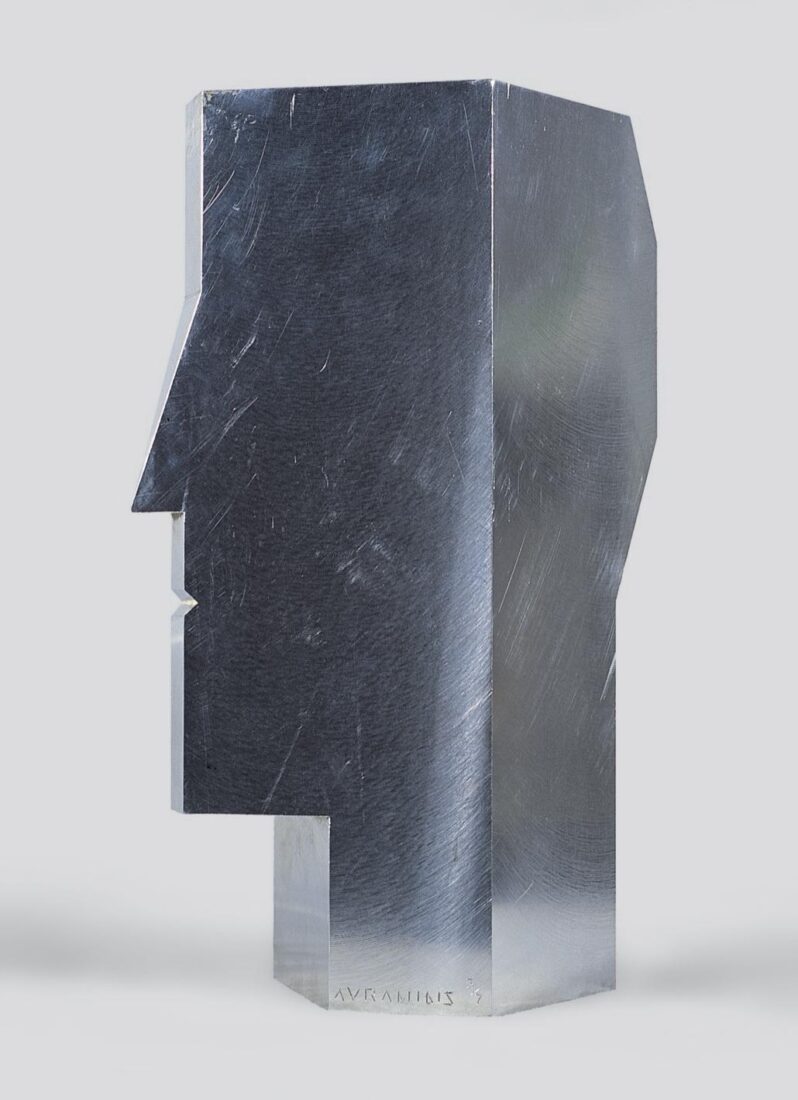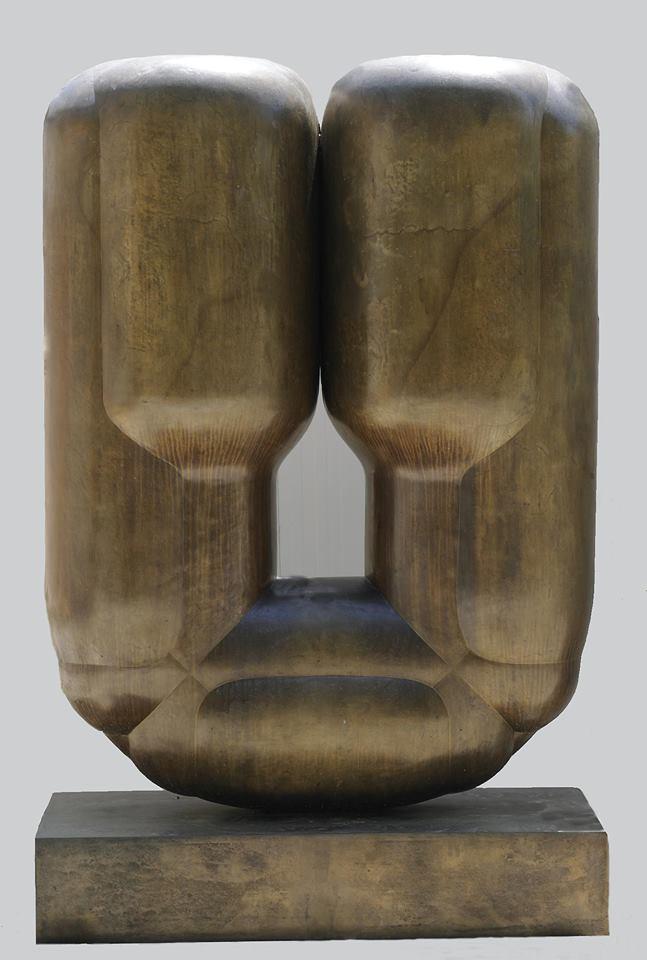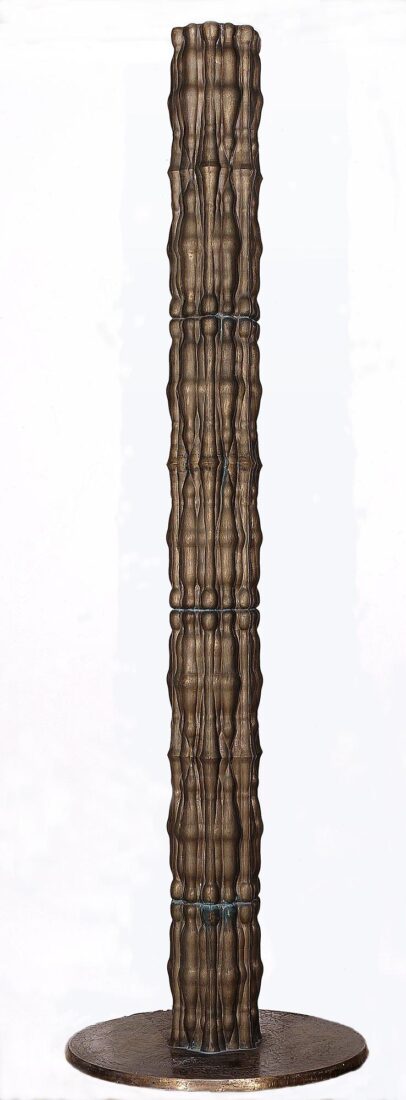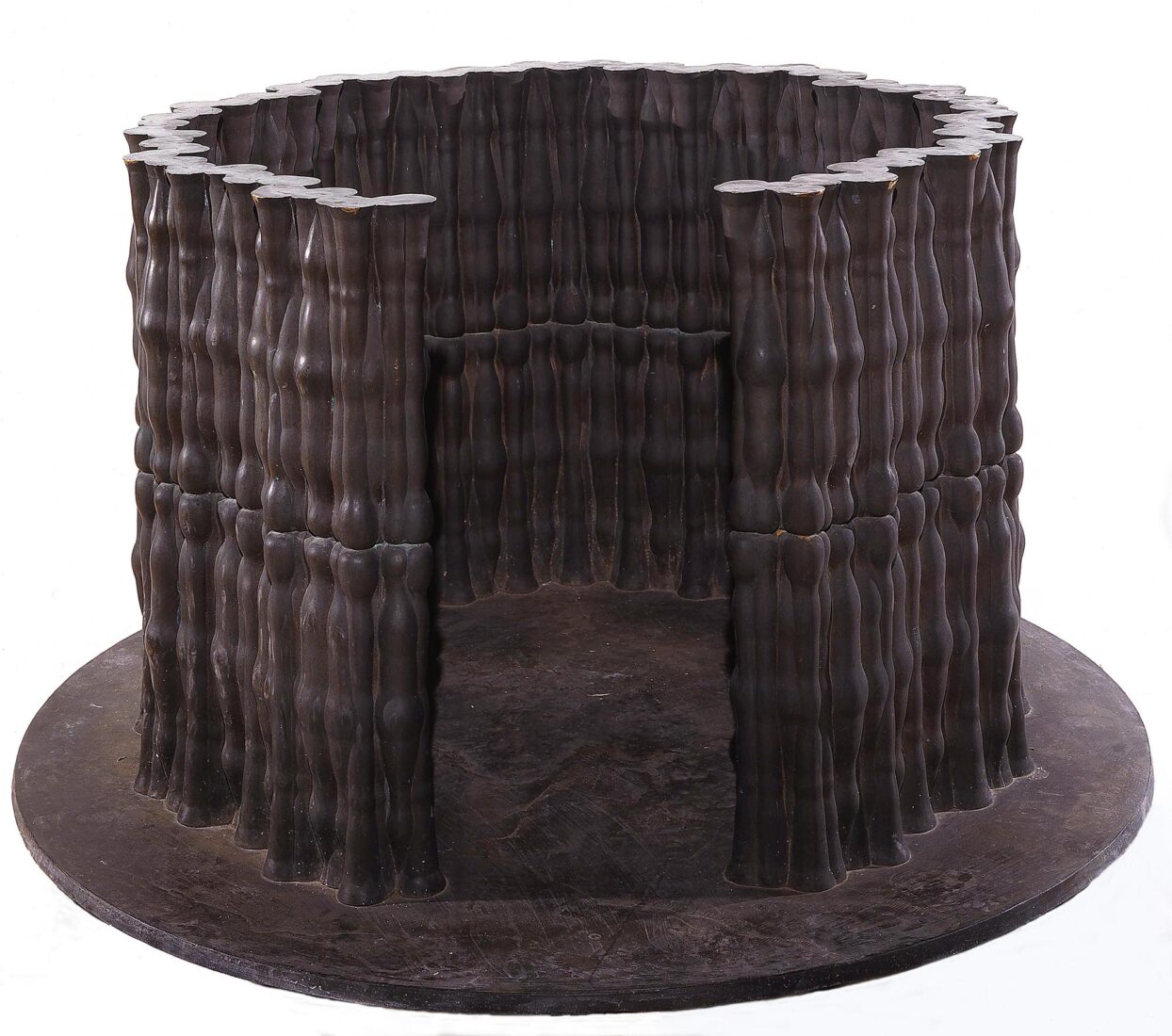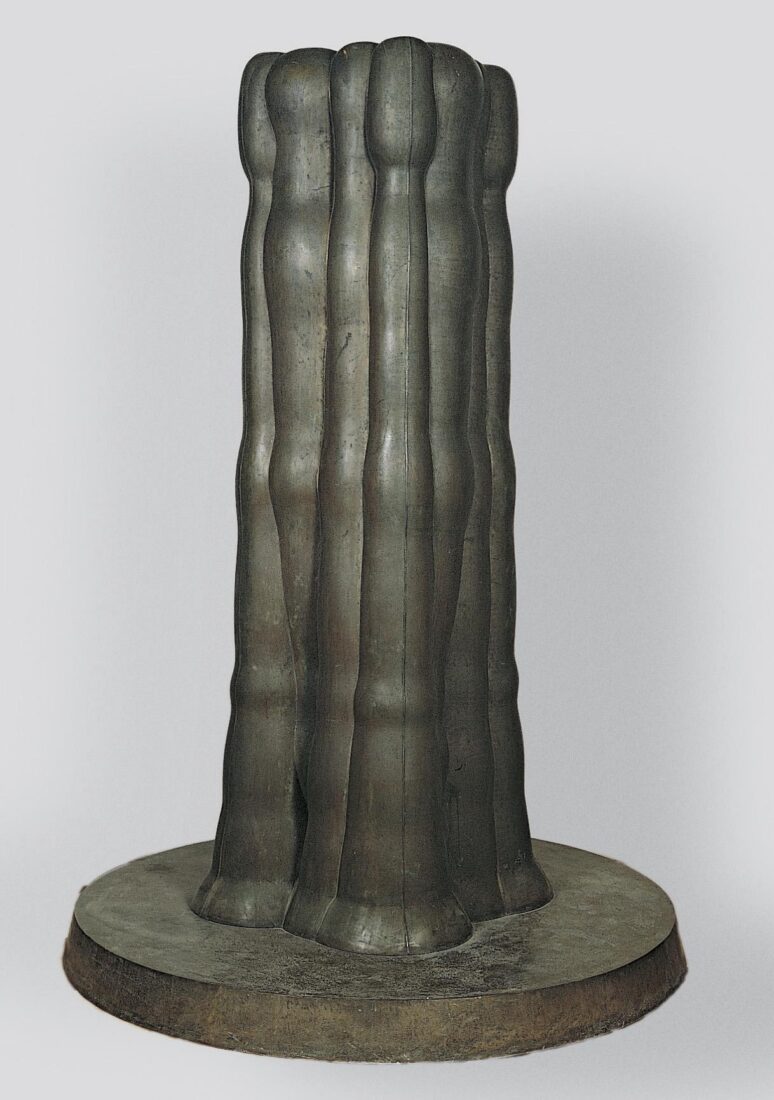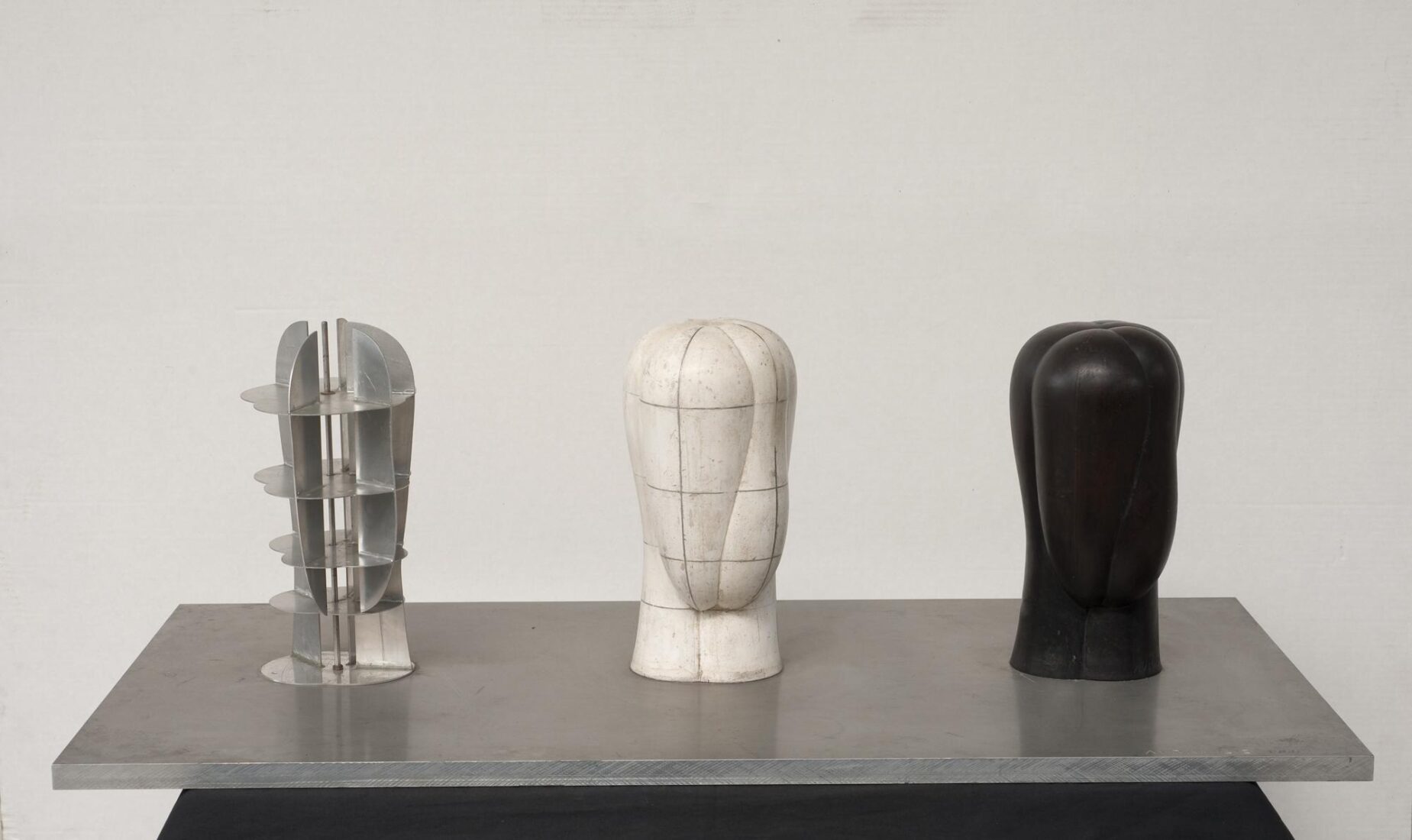Kostas Dimitriadis could be characterized as the bearer par excellence of Rodin’s style into modern Greek sculpture. He adopted not only his plastic style but also the same subjects as his starting point, especially in his commission free compositions.
Among his non commissioned compositions, a most eminent place was occupied by nude female figures. The “Nude Woman” (or “Dancer”) falls within the range of his interests, while the model was the famous dancer Stasia Napierkowska. Dimitriadis, who was particularly interested in the rendering of the momentary, the fleeting, is here endeavoring to render the fleeting movement of the dance, which at the same time offers him the possibility to demonstrate his ability in the rendering of anatomical details. However, one must not overlook the iconographic model used here, the “Woman-Centaur” (c. 1887) by Rodin. Dimitriadis borrowed the intense twisting of the body and the desperate stretching of the arms ahead, thus largely negating their dramatic content, and transformed them into the harmonious and graceful movement of his own dancer.
Dimitris Armakolas has made the human figure the focal point of his creation. Though his interest was in abstract expression in the beginning, during his career he has gone back to figurative depiction, where the nude body continues to be the main point of reference.
The subject of the fragmentary, nude, female body in an attitude of apotheosis, such as the “Emerging Venus II”, has been the center of many of his compositions. The nude female figure with the sensual expression and the smooth skin is seen emerging mysteriously amid unworked volumes, while at the same time inviting the viewer to supplement with his own imagination the parts that are missing, in an endeavor to carry on a conversation with him.
Achilleas Aperghis started out with figurative depictions centered on the human figure, full-body or bust, and then proceeded, mainly after 1950, to more abstract “anthropomorphic” shapes, finally reaching a non-figurative form of expression. Abandoning traditional materials, he followed the trend of the times and turned to iron, bronze and the smelting and welding of metals. The develoyment of the form in space, horizontally, vertically, or diagonally, was of especial interest to him in his endeavor to create an impression of flight. His preoccupation with the field of non-figurative expression would later lead him to the rejection of conventional sculptural depiction and to a conceptual approach to problems, expressed through environments and installations, directly connected to his existential anguish.
His environments with “Ladders”, which were presented for the first time in 1978, first in wood and then in bronze, but also as isolated compositions containing ladders of various sizes, were the result of his quests in the field of environments and installations, combined, however, with his return to the use of elements of figurative representation, and constitute signs of ascent and endeavor, suggesting an outlet for knowledge.
Having studied stage-designing, painting and sculpture, Sotos Alexiou then applied himself a broad field of interests, developing his artistic activity in three main areas. He came into contact with modern non-figurative artistic trends early in his career, while doing his post-graduate work in the USA. Despite that, he has always remained an admirer of the classical art of antiquity and the simplicity of Doric lines, and has evolved his own personal language based on the harmonious principles of geometry combined with the expressive severity offered by the abstract form. With these serving as his perceptual basis, he creates two-dimensional paintings or three-dimensional sculptural compositions which arise from the unadorned combinations of linear or volumetric geometric shapes, such as in “Capricorn 29”.
Ioannis Avramidis was born in Vatum, Russia. In 1943 he settled in Vienna, where for a number of years he was a professor and Director of the Academy of Fine Arts.
The full-length male figure, heir to the ancient Kouros, dominates his oeuvre.
In 1967, Avramidis began a series of figures that he called “Bandfiguren” – i.e. Figures in Bands or rows. He also introduced movement into these compositions. “Walker” is the prelude to this new concept. Maintaining the frontality and using the ancient Kouros as a prototype, Avramidis concentrated his treatment exclusively on the schematized depiction of the figure’s legs. Thus he created a thoroughly abstract composition, yet one that despite the omission of the head, body and arms, remains totally clear in its concept.
